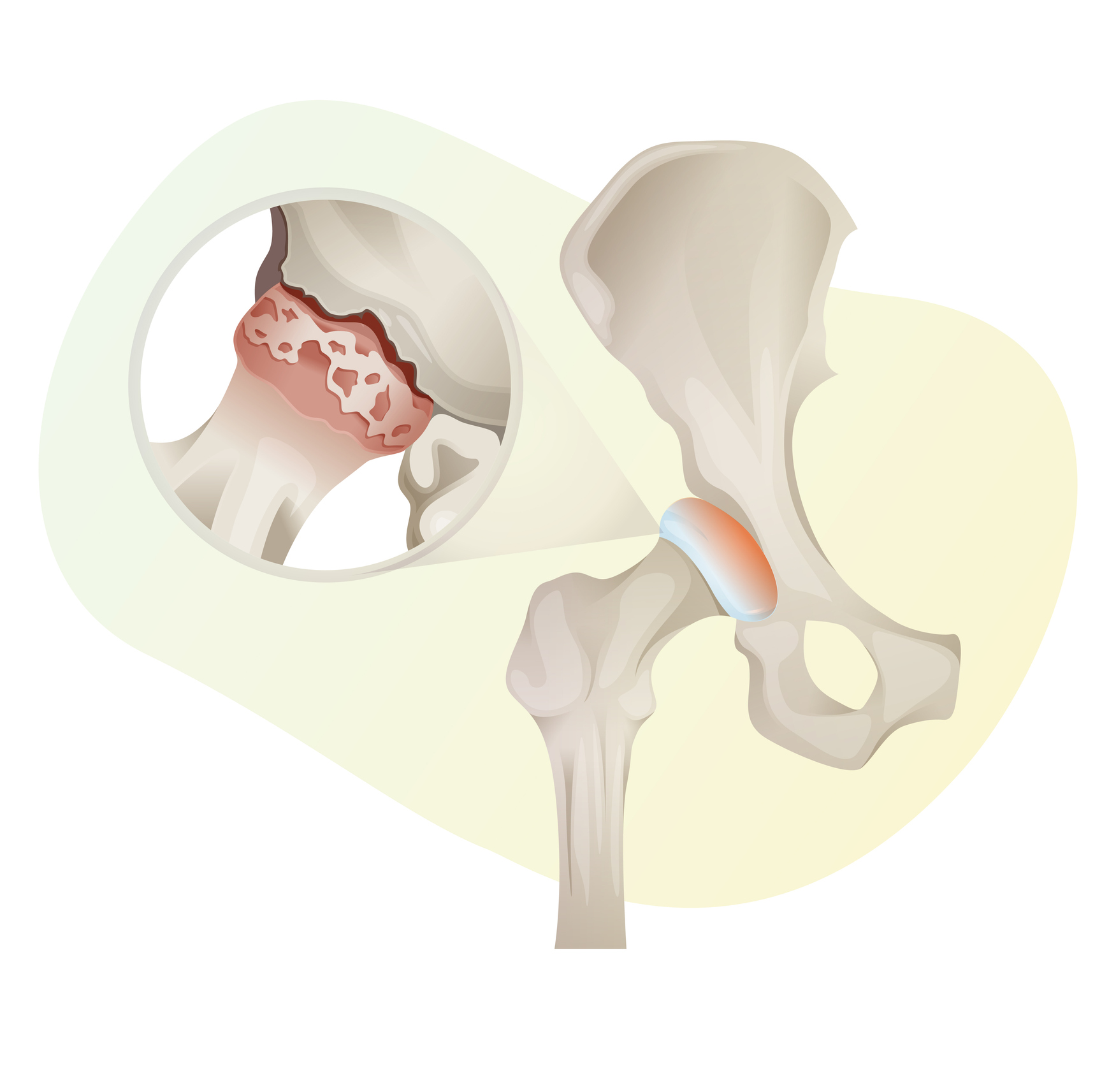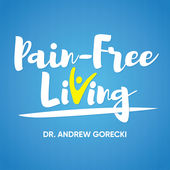
Dr. Gorecki discusses the three most common hip diagnoses (arthritis, bursitis, labral tear) and what they mean.
Watch the video: https://youtu.be/nLnqL2bmnfk
In today’s post, we're going to be talking about the three most common hip joint diagnoses, two of which are mistakenly attributed to hip pain. Osteoarthritis is the most common and is also known as “joint space narrowing”, “degenerative joint disease”, and (my least favorite name) “bone on bone”. I’ll talk more about “bone on bone” later. The number two most common diagnosis is hip bursitis, and number three is a labral tear.
Let's talk about osteoarthritis. It’s by far the most common diagnosis that is blamed for hip pain. It's described as a loss of cartilage. It is true as we age, the hip joint space is narrowing, which can be measured on imaging, like X-rays or MRI’s. This joint space narrowing is a natural part of aging. But there's a lot of research that shows osteoarthritis is not the actual cause of the hip pain people experience. It’s hard to find an older person that doesn't have osteoarthritis, but most of them do not have hip pain. Likewise, many people with hip pain don’t show signs of arthritis. Just like our skin changes as we get older but doesn't automatically hurt, so arthritis doesn’t automatically cause our hip pain.
In some cases, there are osteophytes, or little growths of bone, along the joint line, or bone spurs that are described as osteoarthritis. Osteophytes and bone spurs are typically surgical situations. You want to have a surgeon remove bone spurs. But it’s a different story for arthritis. A high-level study looked at 10,000 patients. 80% of people over the age of 63 had an MRI indicating arthritis, yet only 13% had pain. If arthritis had been the cause of hip pain, we should see closer to 80% of patients reporting pain. These data and others show that arthritis is not a direct cause of hip pain.
Here's why I don't like “bone on bone” as a description for arthritis. It's a myth. In doing research for my doctoral thesis, I discovered that three times our body weight travels through our feet and up through our knees and hips. If I'm 200 pounds, that's upwards of 600 pounds of force that has to go through my hip every time I walk. During running, that force goes up to five times our body weight. In my example, that would amount to one thousand pounds of force. If the bones of the hip were actually touching, were “bone on bone”, the bones would hit against each other. That much force would cause bone bruising, or more likely, bone fracturing. It only takes 800 pounds of force to break a femur which is the biggest bone in the body. So simply put, if “bone on bone” were an actual condition, your bones would be in terrible shape. But there’s no need to worry, because your hip bones are enclosed in a capsular space that is filled with fluid. That fluid and the soft tissues, the muscles, tendons, and ligaments, suspend our joints in tension. Their job is to keep the bones from touching and to allow the hip bones to move inside the capsule. If hips bones could be “bone on bone”, then that hip would have no movement at all. Movement would be impossible.
I think the term “bone-on-bone” is a fear-mongering metaphor. If you want to learn more about how our bones are suspended within the joints, I would encourage you to look up the Biotensegrity Model of Anatomy created by Steve Levin, an orthopedic surgeon. It shows how our body is essentially one tension network where the bones never touch each other.
The bottom line is that arthritis is a thing. It's real, and we can't make it go away. But the good news is that it's not what’s causing your hip pain.
The second most common hip diagnosis is a labral tear. The hip is a ball and socket joint. Around the socket there's a cartilage ring called the labrum. The labrum is designed to make the socket deeper so there's more congruency in the hip. Pain can result when the hip flexes and moves away from the body and turns outward. However, the labrum is aneural, meaning it doesn't have nerve endings, so a labral tear, itself, does not cause pain. Most likely the cause is a hip dysfunction that is causing pain and also caused a labral tear.
A different scientific study showed that 69% of people over the age of 37 years old with a labral tear on an MRI had no pain at all. So a labral tear is not something that we should be using as a diagnostic tool for hip pain. Hip pain is caused by an abnormal change in our body structure, a movement dysfunction, which caused the labral tear and the pain. Therefore, we must identify the abnormal movement and fix it for the pain to go away.
The third most common hip diagnosis is bursitis. Bursa are fluid filled sacs. We have them all over the body. They lie where a tendon attaches to the bone to prevent the tendon from rubbing on the bone. Typically they lie along bony prominences so that the tendon doesn't fray like a rope. There's a big bursa in the upper outside of the hip called the trochanteric bursa. That's the most common cause of hip bursitis. You can test for hip bursitis by pushing on it. If you have pain, it’s possible you have bursitis.
Bursa become inflamed when there is more friction in that area than there is supposed to be. The friction causes inflammation just like a blister on your skin. The inflammation is usually caused by improper movement somewhere in the body that is causing the unwanted friction.
So what is the real cause of your hip pain? Most likely it is a movement dysfunction. In future blog posts we will discuss how these movement dysfunctions can be corrected.
IF you'd like to read more about Hip Pain, click here: Hip Pain Treatment | Superior Physical Therapy (thesuperiortherapy.com)



